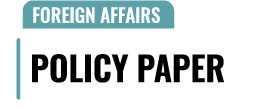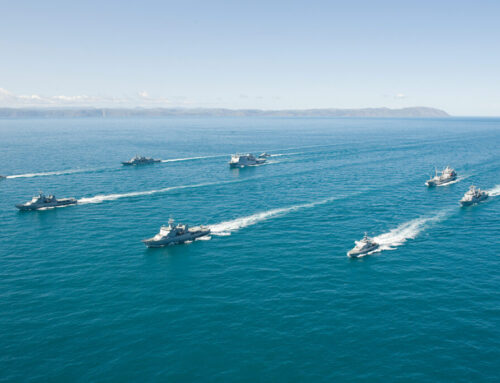PULASKI POLICY PAPER Foreign military aid to Ukraine between promises and deliveries Robert Czulda
Autor foto: Domena publiczna



PULASKI POLICY PAPER Foreign military aid to Ukraine between promises and deliveries Robert Czulda
Autor foto: Domena publiczna
Foreign military aid to Ukraine: between promises and deliveries
Autor: Robert Czulda
Opublikowano: 27 lipca, 2022
Pulaski Policy Paper no 13, July 27, 2022
Since the beginning of the Russian aggression against Ukraine in late February 2022, numerous NATO and EU member states – particularly those from Central and Eastern Europe – have started actively support Ukraine with a direct aid – not only humanitarian, but also military one. This assistance gave the Ukrainian military a much – needed lifeline and a capacity first to halt the Russian advance and then to push an aggressor back from Kyiv.
You can read this Paper as PDF (includes additional diagrams).
A willingness to provide aid to Ukraine was signaled by many states, not only those belonging to NATO. However, as noted by Steven Erlanger (“The New York Times”) “there is a significant disparity between the flood of arms supplied by Britain, Poland and the United States, and what the rest of Europe is providing.”[i] According to the Institute for World Economy (IfW) in Kiel, the United States is a leader when it comes to a value of a military aid committed to Ukraine. The Americans pledged to devote EUR 23.8 billion, while the United Kingdom, which is the second on the same list, made commitments worth EUR 3.8 billion. Poland, which comes third with a military aid worth EUR 1.8 billion, is also an interesting example – the government in Warsaw gave away almost all of its operational tanks of the T-72 type and the first batch of the PT-91s, as well as many of recently introduced into service the KRAB 155 mm self-propelled howitzers. Regarding the European Union, this institution is also providing lethal arms through its European Peace Facility (EPF), which was established in 2021. This is the first time the bloc has, in its history, approved the supply of lethal weapons to a third country.
Nevertheless, it is important to keep in mind that any rankings presenting a financial value of a military aid are not fully informative and accurate. While it is possible to indicate a market value of a modern military equipment, in the case of used weapons, often stored and kept in a reserve, any financial indicators are debatable. How much does a second-hand T-72 cost? Secondly, another obstacle in analyzing aid and its importance is the fact that there are no objective parameters that would allow to indicate, which donations are more important. Is one tank more important to the war effort than a thousand bulletproof vests?
Problems in the accuracy and collection of data is another obstacle. In other words, not all states reveal their arms deliveries to Ukraine, considering that secrecy better serves their interests. In many cases suppliers do not openly inform about a quantity of provided support. This applies to all weaponry – not only tanks and armored vehicles, but also to anti-tank systems and ammunition. A standard formula used in this regard is “an unspecified number”.
Another challenge is the fact that there is often a significant disparity between promises and actual deliveries. A stark example is Germany, who has delivered just EUR 290 million of equipment, while promising EUR 620 million (Germany has delivered 46.08% of committed hardware). The same problem applies to other states, including the United States, which has delivered 38.37% of already promised equipment. Every case is different and is a result of several factors. Sometimes a military aid is stopped by legal problems. That happened in January 2022, when Berlin prevented Estonia from transferring ex-German D-30 towed howitzers (122 mm) or in June 2022, when the same country did not allowed Spain to send the LEOPARD 2A4 tanks to Ukraine.
A time factor might be important too – in other words, deliveries usually take a significant amount of time – equipment has to be restored and sometimes repaired. Spare parts need to be either located and transported or sometimes manufactured. Some deliveries were paralyzed and later cancelled due to political disagreements and diplomatic carelessness. For instance, Poland was willing to donate its MiG-29 jets but due to a lack of a US support this idea fell.
Forms of military aid
As it was mentioned earlier, a foreign military assistance is crucial to change the balance of military power to the disadvantage of Russia. From a point of view of mass-media, the most attractive are „large” systems, such as tanks or artillery. It is also impossible, however, to overestimate a non-quantifiable help – trainings of Ukrainian soldiers, medical aid and, above all, intelligence support. Many states have become involved in trainings of the Ukrainian troops, but in many cases the public is not informed about such activities. In fact, they have been launched before the Russian aggression in February 2022. The effectiveness of the Ukrainian armed forces, including of the corps of non-commissioned officers and officers, is possible, inter alia, thanks to numerous trainings conducted by NATO member states. It is equally difficult to estimate a value of other forms of support, including repairs of damaged military equipment (such assistance was declared by Slovakia). Also in this case any details are scarce.
Other forms of military aid – also crucial yet usually neglected by the media and the public opinion – are deliveries of millions of tons of petrol and kerosene jet fuel for aircraft, not to mention spare parts or ammunition of numerous calibers (for small arms, medium-caliber cannons and for heavy weaponry, including tanks or artillery – the list also includes air-to-air and air-to-ground missiles, as well as thousands of artillery rockets, such Grad 122 mm). Other vital systems are counter-artillery and counter-UAV radars, drones (an unknown number was brought to Ukraine by civilians) or jamming equipment. Not all military aid to Ukraine falls into a category of so called “lethal weapons” (tanks, combat vehicles, rifles etc.). A significant part of support are non-lethal goods. This includes elements such as helmets, flak jackets, bulletproof vests, tactical radios, night-vision goggles.
A scope of support provided by particular states depends on many factors, including their foreign policy agenda and national values. In other words, in some cases exporting lethal military products would be politically too controversial or inconsistent with politics and interests. A list of such states includes Ireland, Austria, and Japan. They have all provided Ukraine with military assistance, but only in the form of non-lethal products. This is also a case of Hungary and Serbia, who – due to their close ties with Russia – limited their aid to Ukraine to non-lethal items.
From the perspective of the Ukrainian war effort, especially during the first phase – when the fate of Ukraine was uncertain – supplies of post-Soviet weaponry, i.e., weapon types already used by the armed forces of Ukraine, were particularly important. It was a natural and logical move, as the Ukrainian military was familiar with them. They also have developed logistics systems to maintain post-Soviet hardware, while the Ukrainian Army was not trained to operate Western origin weapon. Moreover, Ukraine did not have facilities to maintain them. Creating such capabilities required some time. Later, however, the Ukrainian troops began to successfully implement Western weaponry. This was an extremely important achievement as it increased the range of military aid that could be donated to Ukraine.
Major arms deliveries
Especially during the first phase of the war, Ukrainian defenders were often depicted by media as mainly light infantry, armed with lethal mobile anti-tank systems. This was a false narrative and from the very beginning the government in Kyiv was asking for deliveries of MBTs (Main Battle Tanks) to replenish its diminishing stock. Unfortunately for Ukraine, nobody has the T-64, which a main tank of the Ukrainian Army. The West could have offered only Western tanks, such as the LEOPARD 1, but that would require training of crews and service personnel, which would take many months.
Regarding the most important contributions, Ukraine got a massive support from Poland. The government in Warsaw supplied its Eastern neighbor with roughly 240 T-72M1/M1R MBTs and around 85 PT-91s, which are a local development of the T-72M1. Slovenia pledged to donate approximately 54 M-84 MBTs (Yugoslav variant of the T-72) if recompensed by Germany with some heavy military equipment. The Czech Republic was the first country to assist Ukraine with the T-72 (“tens” were reportedly handed over), while Slovakia expressed its willingness to do the same, but Germany was ready to support Bratislava only with 15 Leopard 2 MBTs to fill the gap. Such idea was declined by Bratislava, who would need at least 30 tanks to restore its tank battalion.
Apart from MBTs, an important aid includes artillery, which has now become a key asset for both sides. A foreign aid includes both towed systems as well as mobile ones, known as SPHs (Self-Propelled Howitzers). Ukraine received at least 18 KRAB 155 mm tracked SPHs from Poland (additional batch was promised recently), while 8 ZUZANA-2 155 mm wheeled SPHs were donated by Slovakia. 12 CEASAR 155 mm wheeled SPHs was given by France., while additional six are on their way. Ex-Soviet 2S1 GVOZDIKA 122 mm tracked SPHs were given by at least two states: Poland and the Czech Republic. It was rumored that Sweden could deliver its ARCHER 155 mm wheeled SPHs, while the United Kingdom offered to send 20 AS-90 155 mm tracked SPHs. More than 20 M109 (155 mm) SPHs were promised by the United Kingdom. 22 howitzers of that type (A3GN variant) were given by Norway.
Ukraine also received two very effective MRL (Multiple Rocket Launcher) systems: tracked M270 and wheeled M142 HIMARS (reportedly twelve of each delivered already). Both fire the same family of 227 mm artillery rockets, as well as the MGM-140 ATACMS (Army Tactical Missile System) short-range ballistic missiles, but the latter has not been delivered to Ukraine yet (their range is up to 300 km). Germany also promised to deliver its MARS-II (M270A1) launchers. Apart from that, Ukraine received towed artillery – although it is much less effective than self-propelled howitzers, it also plays its part. Among guns either already sent to Ukraine or promised are M114s (155 mm), L119s (105 mm) and M777s (155 mm).
A list of heavy armor also includes numerous types of AIFVs (Armored Infantry Fighting Vehicles), including at least 30 BMP-1s from Greece and 40 BMP-1s (locally known as BWP-1s) from Poland. Some BVP-1s (Czechoslovak variant of BMP-1) were donated by the Czech Republic, while 35 BVP M80A were given by Slovenia. The M113 tracked APCs (Armored Personal Carriers) were pledged by several states, including Portugal, Australia, Denmark, Lithuania, and Spain. The British list of vehicles includes not only the Spartan/Samaritan tracked vehicles, but also various wheeled patrol vehicles, such as Mastiff, Husky and Wolfhound. An unspecified number of the DZIK were donated by Poland. The AMX-10RC and the VAB are to be delivered by France.
A significant contribution to the Ukrainian defence efforts was also made thanks to a relatively large supply of anti-tank systems – both RPGs (Rocket-Propelled Grenades) and more lethal ATGMs (Anti-Tank Guided Missiles). Although Ukraine has its own systems, such as the Skif/Stugna-P ATGMs, international support was crucial. Ukraine received several types of ATGMs, including MILAN, FGM-148 Javelin, NLAW as well as other systems, such as the AT4 recoilless smoothbore anti-tank weapon, C90, M72 LAW, Panzerfaust 3, RPG-75 and RPG-76 grenade launchers or the Carl Gustaf 8.4 cm recoilless rifles.
Another particularly important element of foreign military aid to Ukraine are air defence systems, although mostly of a very-short range (VSHORAD). They took a relatively large toll especially during the first phase of the conflict, forcing the Russian aircraft to operate at a higher altitude, which reduced its effectiveness (Russian stocks of precision ammunition are small). Among systems delivered to Ukraine are: Starstreak, Piorun/Grom, FIM-92 Stinger or the 9K32 Strela-2, Mistral and more advanced NASAMS air defence systems. It is worth adding that reportedly the United States has already sent to Ukraine the 9K33 Osa (SA-8) highly mobile, low-altitude, short-range tactical surface-to-air missile system.
A burning and still unsolved problem is a highly modest scale of deliveries of longer-range air defence systems. MANPADS (Man-Portable Air Defence Systems) are effective only at the tactical level and do not allow Ukraine to improve a situation at the operational and strategic levels. Lack of deliveries can be explained by the fact that potential suppliers have an insufficient number of such systems and their transfer to Ukraine would reduce their ability to defend themselves. A very important exception is Slovakia’s decision to send its S-300 long range surface-to-air missile system (in a response, both Germany and the Netherlands moved their PATRIOT batteries to Slovakia).
Conclusions
1. Foreign military aid was and still is a key element that has increased significantly the effectiveness of Ukraine’s defence – without it Ukraine would not have been able to resist for so long. However, the amount of delivered weaponry is still insufficient to fully neutralize the Russian threat and allow Ukraine to obtain a strategic advantage.
2. A fundamental yet still unresolved problem is the large discrepancy between promises and actual deliveries. Governments promising to supply arms should remove existing barriers more efficiently and make sure that they do not occur in the event of another armed conflict, when military assistance may become necessary again.
3. According to Mykhailo Podolyak (Adviser to the Head of the Office of President of Ukraine), Ukraine needs at least 1000 howitzers (155 mm), 300 MRLs, 500 MBTs, 2000 armored vehicles and 1000 drones. Even if we consider these figures unrealistic and politically motivated, further military support for Ukraine is undoubtedly necessary. The aim of such activities is not only to ensure the success of Ukraine, but indirectly to increase the security of the Euro-Atlantic zone.
4. The current situation is not only a strategic challenge, but also an opportunity to finally equip NATO member states in Central and Eastern Europe with Western equipment and to help them completely retire post-Soviet weapons. A good example is Poland, which is ultimately heading towards the complete withdrawal of post-Soviet tanks (T-72, T-91). This is also an example of the Czech Republic and possibly Slovakia with a former type of tank. However, this effort should be actively supported by other NATO member states – It is in the interest of Western Europe that partners from the Eastern Flank are equipped with modern and fully NATO interoperable military equipment.
5. The current war in Ukraine clearly shows that EU and NATO states should establish a system for the exchange of information on possessed military equipment. They should also acquire ability to donate and receive it smoothly. A collective mechanism to financially support such activities in the future is also necessary. This will be extremely important in the event of another war, possibly involving a NATO member. Such system would allow to quickly support threatened partners and allies, without unnecessary waste of time. Due to the persistent difficulties of the Ukrainian side with maintaining military equipment of Western origin, it would be a good idea to establish international logistics facilities, with a repair center. It would be co-financed by, for example, the European Union and located somewhere in Central-Eastern Europe.
Author: Dr Robert Czulda, Research Fellow at International Security and Defence Program of the Casimir Pulaski Foundation
The Paper was prepared in cooperation with International Centre for Ukrainian Victory
[i] Steven Erlanger, „Gaps in Arms Supplies to Ukraine Point to Countries’ Divergent Strategies,” The New York Times, July 15, 2022, https://www.nytimes.com/2022/07/15/world/europe/europe-ukraine-arms-weapons-supplies.html.






